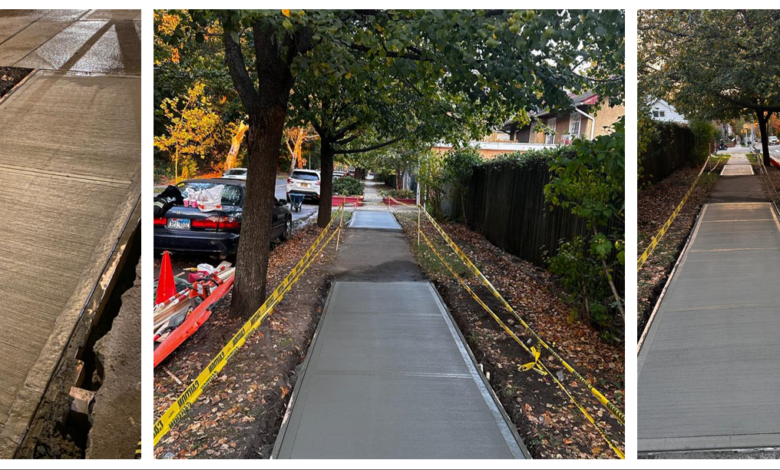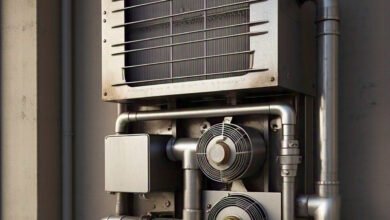
New York City, a bustling metropolis known for its energetic pace and vibrant street life, relies heavily on a network of well-maintained sidewalks. The responsibility for keeping these pedestrian pathways safe and accessible falls largely on property owners. However, navigating the world of sidewalk regulations and potential violations issued by the Department of Transportation (DOT) can be confusing. This comprehensive guide empowers NYC residents with the knowledge to understand, address, and avoid Sidewalk DOT Violations.
Understanding Sidewalk DoT Regulations in NYC
The New York City Department of Transportation (DOT) enforces a set of regulations outlined in the NYC Administrative Code to ensure sidewalks remain safe and accessible. Here’s a breakdown of key aspects:
- Property Owner Responsibility: Property owners, including homeowners, co-op boards, and landlords, are generally responsible for maintaining the sidewalk abutting their property line. This includes:
- Repairing defects: Cracks, uneven surfaces, trip hazards, and missing sidewalk flags require repair to meet safety standards.
- Clearing obstructions: Tree roots, overgrown vegetation, snow and ice accumulation, and any object impeding pedestrian flow must be removed.
- Maintaining accessibility: Sidewalks must comply with accessibility guidelines, ensuring a minimum width (typically 5 feet) and a smooth, level surface for people with disabilities.
- Department of Transportation (DOT) Inspections: DOT inspectors regularly evaluate sidewalks throughout the city. They identify violations and issue official notices to the responsible property owner.
Common Causes of Sidewalk DoT Violations in NYC
Several factors can lead to a Sidewalk DOT violation in New York City. Here are some of the most frequent offenders:
- Damaged Sidewalks: Over time, sidewalks naturally deteriorate due to wear and tear, weather conditions, or tree root growth. Cracks, uneven surfaces, and missing sidewalk flags are common violations.
- Overgrown Vegetation: Untrimmed trees, bushes, or other landscaping that encroach on the sidewalk create obstructions and violate accessibility regulations.
- Snow and Ice Accumulation: Property owners are responsible for clearing snow and ice from the sidewalk adjacent to their property within a specific time frame after a snowfall.
- Obstructions: Items like trash cans, furniture, construction materials, or illegally parked bicycles left on the sidewalk create hazards and impede pedestrian flow.
- Improper Snow Disposal: Shoveling snow onto the sidewalk from driveways or parking areas is a violation, as it narrows the walking path and creates icy hazards when melting.
Consequences of Sidewalk DoT Violations
While the initial notice from DOT isn’t a fine, it signifies a violation that needs to be addressed. Failure to rectify the issue within the specified timeframe (typically 75 days) can lead to more serious consequences:
- Fines: DOT may impose fines on property owners who neglect to repair sidewalk defects. These fines can escalate for repeated offenses or prolonged neglect.
- DOT-Performed Repairs: If the violation persists, DOT can arrange for repairs to be completed by a contractor. The property owner will be billed for the cost of these repairs.
- Lien on Property: Outstanding fines and repair costs associated with unaddressed violations can lead to a lien being placed on the property, potentially hindering future sales or refinancing.
- Liability for Injuries: Property owners can be held liable for injuries sustained by pedestrians due to sidewalk defects on their property.
Taking Responsibility: Property Owner and Resident Duties
Both property owners and residents in NYC play a role in maintaining safe and accessible sidewalks.
Property Owner Responsibilities: As mentioned earlier, property owners are primarily responsible for sidewalk maintenance. Here are some proactive steps to take: Homepage
- Schedule Regular Inspections: Proactively inspect your sidewalk for cracks, uneven surfaces, or other defects. Consider hiring a qualified contractor for professional assessments.
- Maintain Landscaping: Regularly trim trees and bushes to prevent them from encroaching on the sidewalk.
- Develop a Snow Removal Plan: Have a plan in place for clearing snow and ice from the sidewalk promptly after snowfall events. This may involve hiring a snow removal service.
- Address Violations Promptly: Upon receiving a DOT violation notice, take immediate action to address the issue within the designated timeframe.
Resident Responsibilities: While the primary responsibility lies with property owners, residents can also contribute to safer sidewalks:
- Report Sidewalk Defects: If you observe a sidewalk defect in your neighborhood, report it to DOT through their online portal or by calling 311.
- Practice Responsible Snow Removal: If you’re a resident who shovels snow, ensure you clear the entire sidewalk width and dispose of the snow properly without blocking the pedestrian path.
Conclusion
Navigating the world of sidewalk regulations in NYC doesn’t have to be overwhelming. By understanding your responsibilities as a property owner or resident, you can play a vital role in keeping sidewalks safe and accessible for everyone. Here’s a quick recap:
- Property Owners: Be proactive by scheduling regular inspections, maintaining landscaping, developing a snow removal plan, and addressing violations promptly. Consider consulting professional contractors for repairs or assessments.
- Residents: Report sidewalk defects to DOT, practice responsible snow removal, and avoid creating obstructions on the sidewalk.
Go To Home Page




